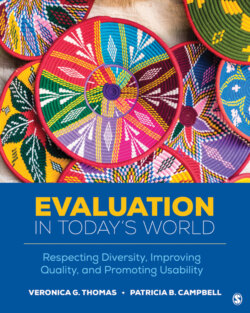Читать книгу Evaluation in Today’s World - Veronica G. Thomas - Страница 120
На сайте Литреса книга снята с продажи.
Evaluation During the New Deal, Wartime, and Economic Growth: 1930s–1950s
ОглавлениеFranklin D. Roosevelt, elected U.S. president in 1933 during the midst of despair and impoverishment of the Great Depression, enacted the New Deal. This included a series of social programs, public work projects, financial reforms, and regulations focusing on providing relief for the unemployed and poor, recovery of the economy back to normal levels, and reform of the financial system to prevent a repeat depression (Berkin et al., 2011). With the New Deal, there was rapid growth of the federal government, and new agencies were created to manage and implement these new large-scale programs. At this time, there was also great demand for evaluating these programs’ effectiveness in stimulating the economy, creating jobs, and instituting social safety nets (Morra-Imas & Rist, 2009). By the 1930s, social scientists were routinely engaged in evaluations of social programs using social science methods.
The first half of the 20th century, in particular, was characterized by extreme and explicit racial prejudice and legal discrimination in the United States. African Americans continued to be marginalized through enforced segregated and diminished access to facilities, housing, education, and opportunities. Jim Crow laws, a set of repressive regulations and customs affecting virtually every section of daily life, made it legal for legislators to racially segregate everything including schools, public parks, swimming pools, theaters, residential areas, jails, asylums, phone booths, residential homes for the elderly and persons with disabilities, and even cemeteries. Further, some states required the use of separate textbooks for African American and white students; some courts even provided African Americans and whites separate Bibles for their swearing in.
The New Deal, although far from ideal, featured some of the most antiracist policies in U.S. history up to that time. Prior to 1933, assistance to African Americans, particularly in the South, was virtually nonexistent. However, the New Deal did bring some federal assistance. For example, New Deal work-relief programs were open to unemployed people of all races, although whites got the better jobs and higher wages. While African Americans received fewer benefits than their white counterparts, on average, from many New Deal programs, they did receive some benefits. Although African Americans (and white women) experienced some limited advancement during this time, many New Deal programs were still able to discriminate against African Americans since many of these federal programs were administered through local authorities or community leaders whose racial biases influenced their program administration. In public assistance programs, for example, African Americans generally received substantially less assistance than their white counterparts, and some charitable organizations even excluded African Americans from their soup kitchens. In another example, the Agricultural Adjustment Administration offered white landowners cash for leaving their fields fallow, which they happily accepted; they, however, did not pass on their government checks to the Black sharecroppers and tenant farmers who actually worked the land (Leuchtenburg, n.d.). Virtually no attention was paid to evaluating programs, through a social justice lens, to document the (known) harsh realities faced by persons of color in accessing and benefiting from existing social programs of the time.
